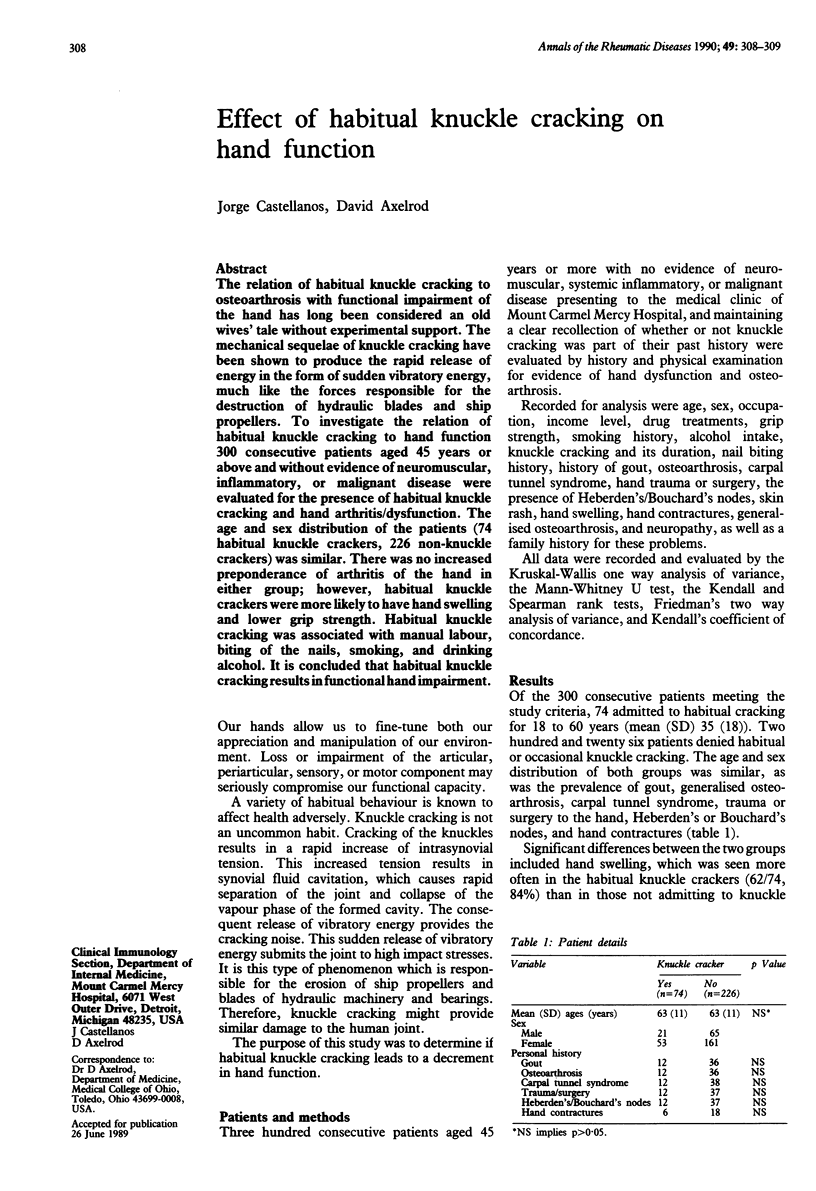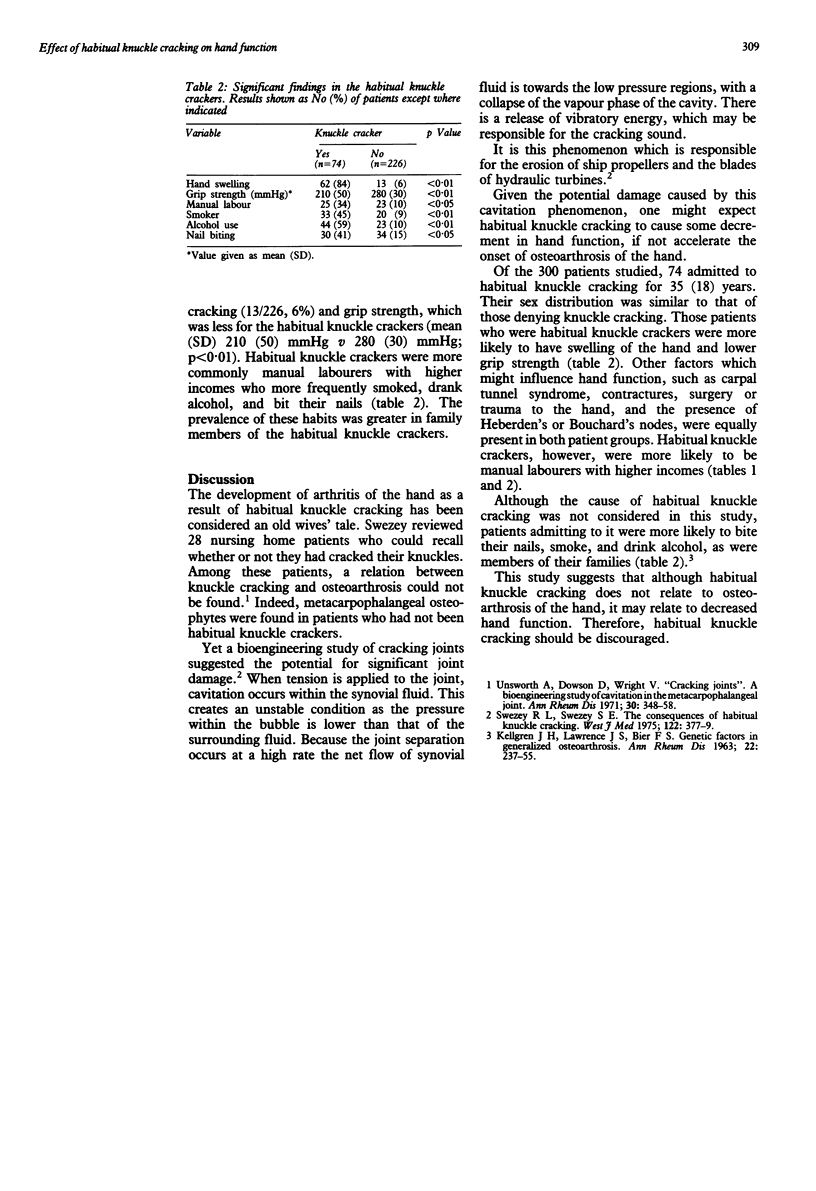Abstract
The relation of habitual knuckle cracking to osteoarthrosis with functional impairment of the hand has long been considered an old wives' tale without experimental support. The mechanical sequelae of knuckle cracking have been shown to produce the rapid release of energy in the form of sudden vibratory energy, much like the forces responsible for the destruction of hydraulic blades and ship propellers. To investigate the relation of habitual knuckle cracking to hand function 300 consecutive patients aged 45 years or above and without evidence of neuromuscular, inflammatory, or malignant disease were evaluated for the presence of habitual knuckle cracking and hand arthritis/dysfunction. The age and sex distribution of the patients (74 habitual knuckle crackers, 226 non-knuckle crackers) was similar. There was no increased preponderance of arthritis of the hand in either group; however, habitual knuckle crackers were more likely to have hand swelling and lower grip strength. Habitual knuckle cracking was associated with manual labour, biting of the nails, smoking, and drinking alcohol. It is concluded that habitual knuckle cracking results in functional hand impairment.
Full text
PDF

Selected References
These references are in PubMed. This may not be the complete list of references from this article.
- Swezey R. L., Swezey S. E. The consequences of habitual knuckle cracking. West J Med. 1975 May;122(5):377–379. [PMC free article] [PubMed] [Google Scholar]
- Unsworth A., Dowson D., Wright V. 'Cracking joints'. A bioengineering study of cavitation in the metacarpophalangeal joint. Ann Rheum Dis. 1971 Jul;30(4):348–358. doi: 10.1136/ard.30.4.348. [DOI] [PMC free article] [PubMed] [Google Scholar]


